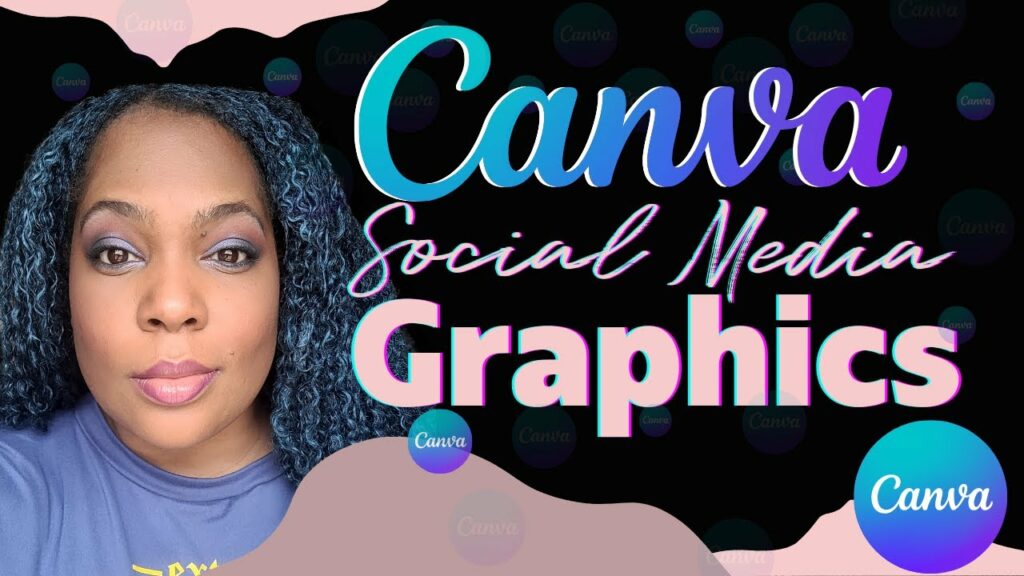Mastering Social Media Graphics Design in Canva: A Comprehensive Guide

Introduction: In today’s digital age, social media has become an integral part of marketing and communication strategies for businesses, brands, and individuals alike. Creating visually engaging and compelling social media graphics is essential for capturing audience attention, increasing engagement, and building brand presence. Canva, a versatile graphic design tool, offers users a wide range of features and templates to design stunning social media graphics effortlessly. In this comprehensive guide, we will explore the principles, techniques, and best practices for designing social media graphics in Canva, empowering users to create eye-catching visuals for their social media platforms.
- Understanding Social Media Graphics: Social media graphics encompass various visual elements, including images, illustrations, text overlays, icons, and logos, designed specifically for sharing on social media platforms such as Facebook, Instagram, Twitter, LinkedIn, Pinterest, and YouTube. These graphics serve multiple purposes, including promoting products or services, sharing updates, announcing events, showcasing content, and engaging with the audience. Effective social media graphics should be visually appealing, on-brand, and optimized for each platform’s specifications and audience preferences.
- Choosing the Right Social Media Platform: Before designing social media graphics, it’s essential to understand the characteristics and requirements of each social media platform to tailor your designs accordingly. Different platforms have distinct image dimensions, aspect ratios, and content formats, affecting how graphics are displayed and perceived by users. By selecting the right platform(s) for your target audience and business goals, you can optimize your social media graphics for maximum impact and engagement.
- Exploring Canva’s Features and Templates: Canva offers a comprehensive suite of features and templates specifically designed for creating social media graphics. Users can choose from a vast library of professionally designed templates, layouts, and elements, including backgrounds, images, illustrations, icons, shapes, and text styles. Canva’s drag-and-drop interface makes it easy to customize templates and create custom graphics from scratch, even for users with limited design experience.
- Defining Your Brand Style and Theme: Consistency is key when designing social media graphics, as it helps reinforce brand identity and recognition across different platforms and content types. Before starting your design, establish a cohesive brand style and theme that reflects your brand personality, values, and aesthetics. Define your brand colors, typography, imagery, and voice to ensure consistency in all your social media graphics.
- Creating Engaging Visual Content: Effective social media graphics are visually engaging and compelling, capturing audience attention within seconds. Incorporate high-quality images, vibrant colors, bold typography, and eye-catching graphics to make your content stand out in users’ feeds. Use Canva’s extensive library of stock photos, illustrations, and icons to find the perfect visual elements for your graphics, or upload your own custom images for a personalized touch.
- Crafting Attention-Grabbing Headlines and Captions: In addition to visual elements, compelling headlines and captions play a crucial role in driving engagement and conveying your message effectively. Use concise and compelling language to communicate your key message or call-to-action clearly. Experiment with different fonts, text sizes, colors, and styles to create emphasis and hierarchy in your text content.
- Optimizing Graphics for Each Platform: Each social media platform has specific requirements and best practices for image dimensions, aspect ratios, and file formats. When designing social media graphics in Canva, ensure that your graphics are optimized for each platform’s specifications to avoid cropping, distortion, or pixelation issues. Canva provides pre-set templates and dimensions for popular social media platforms, making it easy to create graphics tailored to each platform’s requirements.
- Incorporating Brand Elements and Logos: Maintaining brand consistency is essential across all social media graphics. Incorporate your brand elements, such as logos, icons, and brand colors, into your designs to reinforce brand identity and increase brand recognition. Place your logo strategically in your graphics to ensure visibility without overpowering the main content.
- Using Canva’s Collaboration and Sharing Features: Canva offers collaboration and sharing features that enable users to work collaboratively on social media graphics with team members or clients. Users can share designs for review, feedback, and approval, collaborate in real-time using comments and annotations, and easily share finalized graphics on social media platforms or via email.
- Analyzing Performance and Iterating Designs: After publishing social media graphics, monitor their performance using analytics tools provided by each platform. Analyze metrics such as engagement, reach, clicks, and conversions to evaluate the effectiveness of your graphics and identify areas for improvement. Use this data to iterate on your designs, experiment with different approaches, and optimize your social media graphics for better results.
Conclusion: Designing social media graphics in Canva is a creative and empowering process that allows users to express their brand identity, engage with their audience, and achieve their marketing objectives effectively. By following the principles, techniques, and best practices outlined in this guide, users can leverage Canva’s intuitive design tools and extensive resources to create visually stunning and impactful graphics for their social media platforms. Whether you’re a business owner, marketer, influencer, or content creator, Canva provides the flexibility and versatility you need to design compelling social media graphics that resonate with your audience and drive engagement and conversion.




